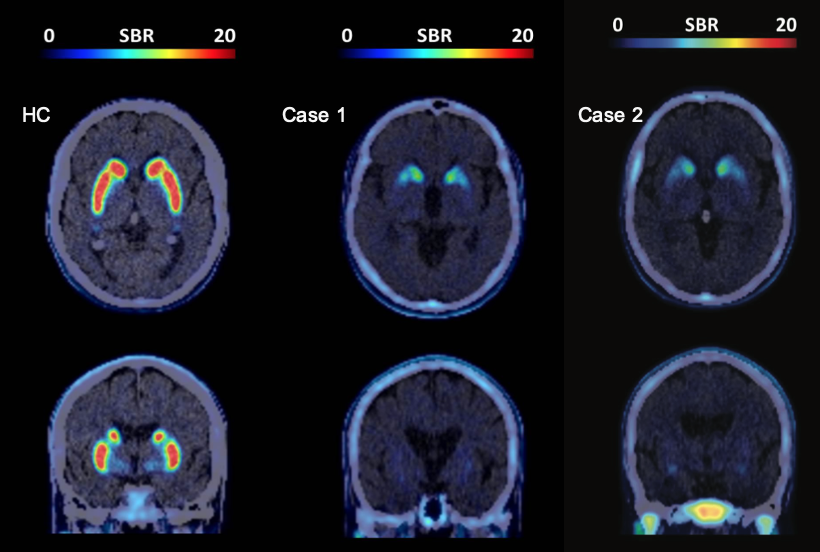Category: Parkinsonism, Others
Objective: To describe two previously unreported, unrelated cases of atypical parkinsonism caused by mutations in ATP13A2gene.
Background: ATP13A2 gene, previously known as PARK 9, has recently been included in the Mixed movement disorders (MD) category of the hereditary MD nomenclature [1], as it can produce a wide clinical spectrum including: 1) Kufor-Rakeb syndrome, a parkinsonism-dystonia syndrome of juvenile onset, with dementia and supranuclear gaze palsy; 2) adult onset spastic paraparesis syndrome with dementia and axonal neuropathy and 3) adult onset of ataxia and action myoclonus.
Method: We describe the clinical, imagenological and genetic findings of two subjects recruited in CETRAM (Centro de Estudios de Trastornos del Movimiento) Santiago, Chile.
Results: Case 1: 25 y.o. female, no family history, nor consanguinity, with history of febril convulsions, begun a parkinsonian syndrome at 17 y.o. Levopa was initiated with poor response. She had oculogyric crisis, cognitive impairment (MoCA test 21/30), upper gaze limitation, facial minimyoclonus, pyramidal signs, and gait and limb ataxia. Brain MRI showed diffuse brain atrophy. DAT PET showed a marked bilateral reduction of dopamine transporters in the nigrostriatal pathway [figure1]. Next generation sequencing revealed an ATP13A2 pathogenic variant (p. Tyr1020Thrfs*3) and a likely pathogenic one (Trp608*).
Case 2: 28 y.o. female, no familiar history, presented with parkinsonism, dysphagia, pyramidal signs, spastic paraparesis and oculogyric crisis. Gait disturbance initiated at 17 y.o. She was treated with levodopa with initial good response but with development of dyskinesias. Brain MRI showed cerebellar atrophy. DAT PET showed a marked bilateral reduction of dopamine transporters in the nigrostriatal pathway [figure1]. Exome sequencing revealed an ATP13A2 pathogenic variant c.1306+5G>A and a likely pathogenic one c.2529*1+G>A.
Conclusion: We describe two cases of compound heterozygous mutations in ATP13A2 gene, in two non-consanguineous, non-related families, expressing as Kufor Rakeb syndrome with oculogyric crisis and severe dopaminergic denervation. With this report, there are 4 different Chilean families that present ATP13A mutations. As it is a very rare mutation, future research should include ancestry studies to assess if there is a common ancestor between the Chilean and the Jordanian population.
References: 1. Lange, Lara M., et al. “Nomenclature of genetic movement disorders: recommendations of the International Parkinson and Movement Disorder Society task force–an update.” Movement Disorders 37.5 (2022): 905-935.
To cite this abstract in AMA style:
P. Saffie, E. Fernandez, S. Mariacca, P. Salles, P. Chana. Kufor-Rakef syndrome, report of two unrelated cases from Chile studied with DAT-PET [abstract]. Mov Disord. 2023; 38 (suppl 1). https://www.mdsabstracts.org/abstract/kufor-rakef-syndrome-report-of-two-unrelated-cases-from-chile-studied-with-dat-pet/. Accessed January 7, 2026.« Back to 2023 International Congress
MDS Abstracts - https://www.mdsabstracts.org/abstract/kufor-rakef-syndrome-report-of-two-unrelated-cases-from-chile-studied-with-dat-pet/

